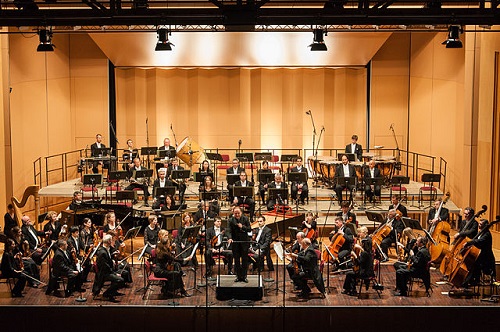Difference Between an Orchestra and a Band
The prominent distinction between the small band and the orchestra lies in the usage of instruments as well as the variance in music composition, style, and type. In the broader sense, the orchestra is a large ensemble of musicians, and the instrumentalists do stage performances. On the other hand, a band is a comparatively small group of performers without string instruments. Both music troupes have their own identities. Experts have analyzed the different aspects of orchestras and bands by providing good examples. Their research is vital to a newcomer to know about the differences between the band and orchestra.
Difference in Usage of Music Instruments for Band and Orchestra
- A “band” includes brass, percussion, and woodwinds along with flutes, clarinets, and trumpets.
- An “orchestra” is composed of different string instruments like violins, basses, and violas.
Different Features of Band and Orchestra
Smartly speaking, the overall purpose of orchestra and band performers is the same. They try to keep the symphony, credence, and perfect melody with flawless rhythm to satisfy the audience. Musicians have to arrange different sorts of musical instruments to play. Still, there is dissimilarity between the band and orchestra. The band has no string instrument for a musician to deal with. Two groups use different instruments to maintain smooth tonal effect with optimum clarity in resonance and credence. The music composers like Brahms or Mozart modified basic instruments for better music arrangement. A Sousa marching band also has a different flavor with a separate identity. However, each conductor needs to decide what type of musical instrument is suitable to create the beautiful ambience for audiophiles. Music composers and arrangers have to select perfect instruments, which must be tuned up to low-, medium-, and high-pitched tones. Depending on the sound and melody, these two different music ensembles fill up the stage by installing ergonomic instruments such as basses, altos, sopranos, tenors, cellos, violas, violins, and clarinets. Music composers have to handpick the instruments to decorate their music troupes for public entertainment. For this reason, they will have to do overnight study and experiment before presenting the melodious music to get appreciation from the audience.
Prominent Variance in Music Type and Instrument Arrangement
From another angle, experts have also evaluated orchestras and bands to help the audience build up strong conceptions about the type of music. For instance, apart from arrangement of music instruments, the variance lying between the orchestra and band is visible in the style and presentation. An orchestra prioritizes the more sophisticated music style, whereas the popular bands have a tendency to revive the ethos of pop music. An orchestra formed with a group of approximately fifty participants, musicians, or music players is called a “chamber orchestra.” On the other hand, a symphony or philharmonic orchestra has around one hundred performers to hit the floor. A competent music conductor is responsible for handling the whole orchestra.
Different Originalities
The term “orchestra” has a Greek or Latin derivative. However, the originality of the decent band is found in Middle French. This music band is basically an organized music ensemble with a batch of experienced musicians.
More Differences Between Band and Orchestra
Generally, you will see many modified string instruments on the stage at any local or international orchestra event. The symphony or philharmonic orchestra participants showcase various string-based instruments to enrich the music. However, the smaller chamber orchestra has a tiny setting with a group of a limited number of musicians compared to the symphony group. Lastly, the band performers are found marching on the floor or stage. They keep the same traditional style. An orchestra troupe is found sitting on the floor with a wide range of music instruments. Obviously, in a band, a professional leader is seen keeping busy by playing instruments. A conductor who leads the team of orchestra musicians is not compelled to play instruments. He conducts the troupe standing on the hard floor.
These differences or dissimilarities between orchestra and band should be understood by any beginner or novice musician for accurate evaluation. Informative content and articles posted on websites renew conceptions of people to assess various features, aspects, and objectives of these two music ensembles.
- Difference Between Vascular Cambium and Cork Cambium - November 1, 2023
- Difference Between DevOps and Developer - September 10, 2023
- Difference Between Acute Gastritis and Chronic Gastritis - April 3, 2023
Search DifferenceBetween.net :
2 Comments
Leave a Response
References :
[0]https://en.wikipedia.org/wiki/Orchestra


Very informative article, it’s quite easy to remember, Brass for bands, & strings for the Orchestra. I have a site on Band & Orchestra/classical.
Orchestras have strings, percussion, and wind instruments. At least the one I was in did. Bands ( unless a string band which utilizes guitars) doesn’t have any string instruments.